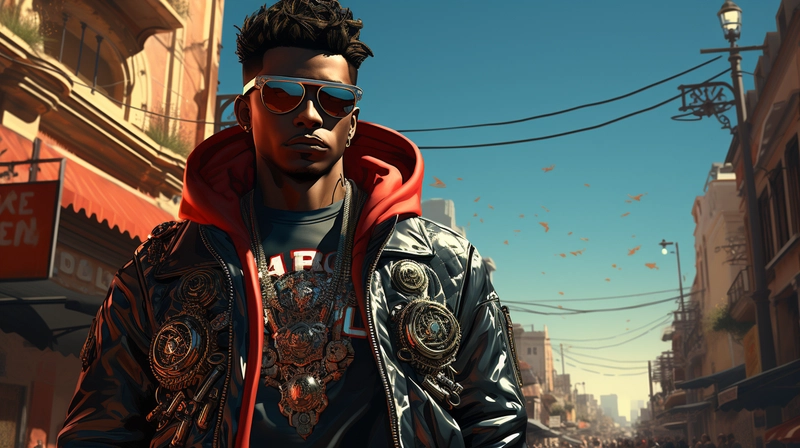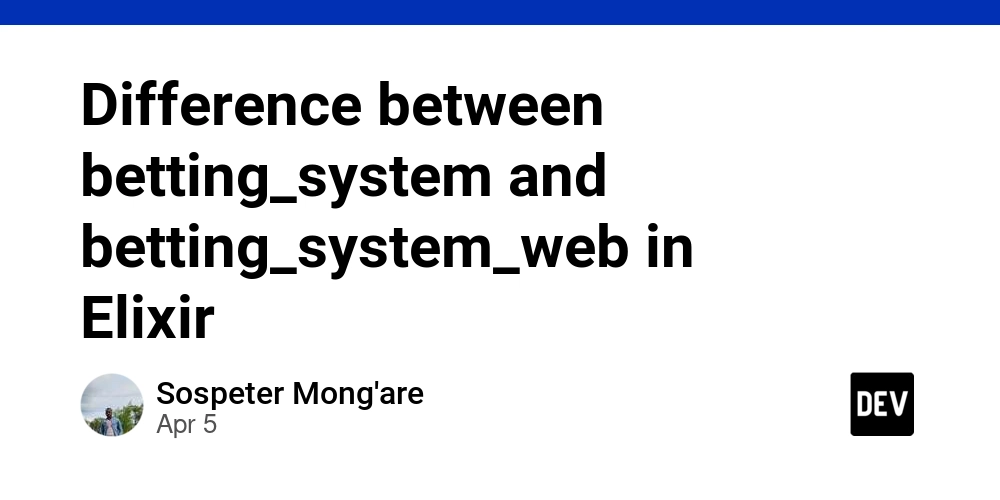A Comprehensive Guide to CSS Terminology
CSS (Cascading Style Sheets) is the language that brings life to the web. It transforms plain HTML structures into visually stunning, interactive, and user-friendly websites. However, with its vast array of terminology, concepts, and techniques, CSS can sometimes feel overwhelming—especially for beginners or developers revisiting the language after some time. From mastering the cascade to understanding specificity and styling forms, CSS terminology is both powerful and intricate. But here’s the good news, once you break it down into manageable pieces, CSS becomes not only approachable but also incredibly fun to work with. Whether you’re building a simple landing page or a complex web application, understanding CSS terminology is the key to unlocking your creativity and ensuring your designs look great across all devices. 1. The Objectives The primary goal of this post is to refresh and deepen your understanding of CSS terminology. We’ll cover the foundational concepts and practical applications in a way that’s easy to follow, even if you’re new to CSS. By breaking down complex topics like selectors, properties, values, and interactivity into bite-sized categories, we could aim to make CSS more accessible and actionable for developers at all levels. This guide isn’t just about theory—it’s packed with real-world examples and code snippets you can immediately apply to your projects. Whether you’re debugging a tricky layout issue or designing a responsive form, this post will equip you with the tools and knowledge you need to succeed. 1.1 The Scope In this post, we’ll cover the following key areas: Core Principles of CSS: Understand the foundational concepts that govern how styles are applied, including the cascade, specificity, inheritance, and the box model. Syntax Elements: Learn the building blocks of CSS, such as selectors, declarations, rulesets, and at-rules, and how they work together to style HTML elements. Properties and Values: Explore common CSS properties and their corresponding values, grouped into categories like typography, layout, colors, and measurements. Styling Images and Forms: Discover techniques for styling images effectively and customizing forms to improve usability and aesthetics. Adding Interactivity: Dive into mouse states like :hover, :focus, and :active to create dynamic and engaging user experiences. Practical Examples and Implementation: Combine everything you’ve learned into complete, real-world examples that demonstrate how CSS works in action. By the end of this post, you’ll have a solid grasp of CSS terminology and the confidence to tackle even the most challenging styling tasks. Let’s get started! 2. Core Principles of CSS CSS operates based on foundational principles like the cascade, specificity, inheritance, and the box model. These principles determine how styles are applied and interact with each other, shaping the behavior of your web designs. Understanding these core concepts is essential for writing efficient, maintainable, and predictable CSS. Whether you’re debugging a layout issue or optimizing for performance, mastering these principles will help you create clean and functional styles. In this chapter, we’ll explore each of these principles in detail, providing examples and actionable insights to solidify your understanding. 2.1 The Cascade The cascade is one of the most fundamental aspects of CSS. It determines how styles are applied based on their order and source. When multiple rules target the same element, the cascade decides which rule takes precedence. Here’s how it works: Order of Rules: Later rules override earlier ones within the same source. Sources of Styles: Styles can come from three sources: Browser Defaults: Styles applied by the browser (e.g., default margins on paragraphs). User Styles: Custom styles defined by the user (e.g., via browser settings or extensions). Author Styles: Styles written by the developer (you!). Use Case: Understanding the cascade helps you predict and control how styles are applied, especially when dealing with conflicting rules. Example: p { color: blue; /* Applied first */ } p { color: red; /* Overrides the previous rule */ } In this example, all elements will appear red because the second rule overrides the first due to its position in the cascade. Reference: MDN - The Cascade 2.2 The Specificity Specificity is a priority system that determines which styles take precedence when multiple rules apply to the same element. It’s like a hierarchy that ranks selectors based on their "weight." Here’s how specificity works: Hierarchy: Inline styles (e.g., style="color: red;") have the highest specificity. IDs (e.g., #main-header) come next. Classes, attributes, and pseudo-classes (e.g., .header, [type="text"], :hover) follow. Elements and pseudo-elements (e.g., p, ::before) have the lowest specificity. Key

CSS (Cascading Style Sheets) is the language that brings life to the web. It transforms plain HTML structures into visually stunning, interactive, and user-friendly websites. However, with its vast array of terminology, concepts, and techniques, CSS can sometimes feel overwhelming—especially for beginners or developers revisiting the language after some time. From mastering the cascade to understanding specificity and styling forms, CSS terminology is both powerful and intricate.
But here’s the good news, once you break it down into manageable pieces, CSS becomes not only approachable but also incredibly fun to work with. Whether you’re building a simple landing page or a complex web application, understanding CSS terminology is the key to unlocking your creativity and ensuring your designs look great across all devices.
1. The Objectives
The primary goal of this post is to refresh and deepen your understanding of CSS terminology. We’ll cover the foundational concepts and practical applications in a way that’s easy to follow, even if you’re new to CSS. By breaking down complex topics like selectors, properties, values, and interactivity into bite-sized categories, we could aim to make CSS more accessible and actionable for developers at all levels.
This guide isn’t just about theory—it’s packed with real-world examples and code snippets you can immediately apply to your projects. Whether you’re debugging a tricky layout issue or designing a responsive form, this post will equip you with the tools and knowledge you need to succeed.
1.1 The Scope
In this post, we’ll cover the following key areas:
- Core Principles of CSS: Understand the foundational concepts that govern how styles are applied, including the cascade, specificity, inheritance, and the box model.
- Syntax Elements: Learn the building blocks of CSS, such as selectors, declarations, rulesets, and at-rules, and how they work together to style HTML elements.
- Properties and Values: Explore common CSS properties and their corresponding values, grouped into categories like typography, layout, colors, and measurements.
- Styling Images and Forms: Discover techniques for styling images effectively and customizing forms to improve usability and aesthetics.
-
Adding Interactivity: Dive into mouse states like
:hover,:focus, and:activeto create dynamic and engaging user experiences. - Practical Examples and Implementation: Combine everything you’ve learned into complete, real-world examples that demonstrate how CSS works in action.
By the end of this post, you’ll have a solid grasp of CSS terminology and the confidence to tackle even the most challenging styling tasks. Let’s get started!
2. Core Principles of CSS
CSS operates based on foundational principles like the cascade, specificity, inheritance, and the box model. These principles determine how styles are applied and interact with each other, shaping the behavior of your web designs. Understanding these core concepts is essential for writing efficient, maintainable, and predictable CSS.
Whether you’re debugging a layout issue or optimizing for performance, mastering these principles will help you create clean and functional styles. In this chapter, we’ll explore each of these principles in detail, providing examples and actionable insights to solidify your understanding.
2.1 The Cascade
The cascade is one of the most fundamental aspects of CSS. It determines how styles are applied based on their order and source. When multiple rules target the same element, the cascade decides which rule takes precedence. Here’s how it works:
- Order of Rules: Later rules override earlier ones within the same source.
-
Sources of Styles: Styles can come from three sources:
- Browser Defaults: Styles applied by the browser (e.g., default margins on paragraphs).
- User Styles: Custom styles defined by the user (e.g., via browser settings or extensions).
- Author Styles: Styles written by the developer (you!).
Use Case: Understanding the cascade helps you predict and control how styles are applied, especially when dealing with conflicting rules.
Example:
p {
color: blue; /* Applied first */
}
p {
color: red; /* Overrides the previous rule */
}
In this example, all elements will appear red because the second rule overrides the first due to its position in the cascade.
Reference: MDN - The Cascade
2.2 The Specificity
Specificity is a priority system that determines which styles take precedence when multiple rules apply to the same element. It’s like a hierarchy that ranks selectors based on their "weight." Here’s how specificity works:
-
Hierarchy:
-
Inline styles (e.g.,
style="color: red;") have the highest specificity. -
IDs (e.g.,
#main-header) come next. -
Classes, attributes, and pseudo-classes (e.g.,
.header,[type="text"],:hover) follow. -
Elements and pseudo-elements (e.g.,
p,::before) have the lowest specificity.
-
Inline styles (e.g.,
Key Difference: A more specific selector will always override a less specific one, regardless of the order in the stylesheet.
Example:
.header {
color: green;
}
#main-header {
color: red; /* Takes precedence due to higher specificity */
}
In this case, the element with the ID main-header will appear red because IDs have higher specificity than classes.
Tip: Avoid overusing IDs in your CSS to prevent specificity conflicts, as they can make your styles harder to maintain.
Reference: MDN - Specificity
2.3 Inheritance
Some CSS properties are inherited by child elements from their parents. This means that if you define a property on a parent element, its children will automatically adopt the same value unless explicitly overridden. Inheritance helps reduce redundancy and ensures consistency across your design.
Common Inherited Properties:
colorfont-familyline-heighttext-align
Use Case: Inheritance is particularly useful for typography and text-related styles, as it allows you to define global styles on the or elements and have them propagate throughout your document.
Example:
body {
font-family: 'Arial', sans-serif;
}
/* All child elements inherit this font-family */
In this example, every element inside the will use the Arial font unless another rule specifies otherwise.
Tip: Use the inherit keyword to explicitly inherit a property from a parent element:
span {
color: inherit; /* Inherits the color from its parent */
}
Reference: MDN - Inheritance
2.4 Box Model
The box model is a fundamental concept in CSS that defines how elements are structured and spaced within a layout. Every HTML element is treated as a rectangular box, consisting of four components:
- Content: The innermost part of the box where text and images appear.
- Padding: The space between the content and the border.
- Border: The outer edge of the padding.
- Margin: The space outside the border, separating the element from other elements.
Understanding the box model is crucial for controlling layout and spacing effectively.
Diagram:
+---------------------------+
| Margin |
| +---------------------+ |
| | Border | |
| | +---------------+ | |
| | | Padding | | |
| | | +---------+ | | |
| | | | Content | | | |
| | | +---------+ | | |
| | +---------------+ | |
| +---------------------+ |
+---------------------------+
Example:
.box {
width: 200px; /* Content width */
padding: 10px; /* Space inside the border */
border: 5px solid black; /* Border thickness and style */
margin: 20px; /* Space outside the border */
}
In this example:
- The total width of the
.boxelement is calculated as:
Width = Content Width + Padding (left + right) + Border (left + right)
Width = 200px + 20px (10px × 2) + 10px (5px × 2) = 230px
Tip: Use the box-sizing: border-box; property to include padding and borders in the element’s total width and height, making layouts easier to manage:
* {
box-sizing: border-box;
}
Reference: MDN - Box Model
3. Syntax Elements
CSS syntax is the foundation of how styles are written and applied to HTML documents. It consists of selectors, declarations, rulesets, and at-rules, which together form the building blocks of CSS. Understanding these elements is essential for writing clean, maintainable, and effective styles. In this chapter, we’ll break down each component of CSS syntax and provide practical examples to help you grasp how they work.
3.1 Selectors
Selectors are the tools that target specific HTML elements for styling. They allow you to apply styles to individual elements, groups of elements, or elements in specific states. Let’s explore the most common types of selectors:
3.1.1 Type Selector
The type selector targets elements by their tag name (e.g., p, div, h1). It applies styles to all instances of the specified element.
Example:
p {
color: navy;
}
In this example, all elements will have navy-colored text.
3.1.2 Class Selector
The class selector targets elements based on their class attribute. Classes are reusable and can be applied to multiple elements, making them ideal for styling components like buttons, cards, or sections.
Example:
.button {
background-color: #007bff; /* Blue background */
color: white; /* White text */
}
Here, any element with the class button will have a blue background and white text.
3.1.3 ID Selector
The ID selector targets a single unique element by its id attribute. IDs are more specific than classes and should be used sparingly to avoid specificity conflicts.
Example:
#main-header {
background-color: #333; /* Dark gray background */
}
In this case, the element with the ID main-header will have a dark gray background.
3.1.4 Attribute Selector
The attribute selector matches elements based on their attributes (e.g., type="text", disabled). This is particularly useful for styling form inputs or other elements with specific attributes.
Example:
input[type="text"] {
border: 1px solid #ccc; /* Gray border */
}
Here, only elements with the type="text" attribute will have a gray border.
3.1.5 Pseudo-class
A pseudo-class targets elements in specific states, such as when they’re hovered over (:hover), clicked (:active), or matched by a certain pattern (:nth-child()). Pseudo-classes add interactivity and dynamic behavior to your styles.
Example:
button:hover {
background-color: green; /* Green background on hover */
}
In this example, the button’s background color changes to green when the user hovers over it.
3.1.6 Pseudo-element
A pseudo-element styles specific parts of an element, such as the first line of a paragraph (::first-line) or content before/after an element (::before, ::after). Pseudo-elements are powerful for fine-grained control over styling.
Example:
p::first-line {
font-weight: bold; /* Bold text for the first line */
}
Here, the first line of every element will appear in bold.
Reference: MDN - Selectors
3.2 Declarations and Rulesets
A declaration consists of a property-value pair that defines a specific style. A ruleset groups one or more declarations within a block, associated with a selector. Together, declarations and rulesets form the core structure of CSS.
Explanation:
- A property specifies what aspect of the element is being styled (e.g.,
color,font-size). - A value specifies the exact style to apply (e.g.,
blue,16px).
Example:
h1 {
color: blue; /* Property: color, Value: blue */
font-size: 36px; /* Property: font-size, Value: 36px */
}
In this example:
- The
h1selector targets allelements. - The
colorproperty sets the text color to blue. - The
font-sizeproperty sets the text size to 36 pixels.
Reference: MDN - CSS Syntax
3.3 At-rules
At-rules are special directives prefixed with @ that enable conditional and dynamic styling. They allow you to apply styles based on conditions, import external stylesheets, or define animations.
Common Examples:
-
@media: Applies styles based on media queries (e.g., screen size). -
@keyframes: Defines animations. -
@import: Imports external stylesheets.
Example:
@media (max-width: 768px) {
body {
font-size: 14px; /* Smaller font size on smaller screens */
}
}
In this example:
- The
@mediarule applies styles only when the viewport width is 768px or less. - The
bodytext size is reduced to 14px for better readability on smaller devices.
Reference: MDN - At-rules
4. Properties and Values
CSS properties define what aspect of an element is being styled, while values specify the exact style to apply. There are hundreds of standardized properties, each with its own set of valid values. These properties control everything from typography and layout to colors, spacing, and animations. In this chapter, we’ll explore common CSS properties grouped into categories for clarity:
- Typography: Styling text for readability and aesthetics.
- Layout: Controlling the structure and alignment of elements.
- Colors and Backgrounds: Adding visual appeal with static and dynamic colors.
- Units and Measurements: Using flexible units and calculations for responsive designs.
By the end of this chapter, you’ll have a solid understanding of how to use these properties effectively in your projects.
4.1 Typography
Typography is one of the most important aspects of web design. Properly styled text improves readability, accessibility, and overall user experience. Let’s look at some key properties for styling text:
-
font-family: Specifies the typeface(s) to use. -
font-size: Defines the size of the text. -
line-height: Controls the spacing between lines of text. -
text-align: Aligns text horizontally (e.g., left, center, right).
Example:
body {
font-family: 'Arial', sans-serif; /* Default font */
font-size: 16px; /* Base font size */
line-height: 1.5; /* Spacing between lines */
text-align: center; /* Center-align text */
}
In this example:
- The
font-familyensures a clean and readable typeface. - The
font-sizesets a comfortable base size for body text. - The
line-heightimproves readability by adding vertical spacing. - The
text-aligncenters all text within the.
Reference: MDN - Typography Properties
4.2 Layout
CSS layout properties allow you to control the structure and alignment of elements on the page. Modern CSS provides powerful tools like flexbox and grid for creating responsive and dynamic layouts.
-
display: Defines how an element behaves in the layout (e.g.,block,inline,flex,grid). -
position: Controls the positioning of elements (e.g.,static,relative,absolute,fixed). -
flex: Enables flexible layouts with flexbox. -
grid: Creates grid-based layouts with rows and columns.
Example:
.container {
display: flex; /* Use flexbox for layout */
justify-content: space-between; /* Distribute items evenly */
align-items: center; /* Vertically align items */
}
In this example:
- The
display: flexproperty enables flexbox. - The
justify-contentdistributes child elements evenly across the container. - The
align-itemsvertically centers the child elements.
Reference:
4.3 Colors and Backgrounds
Colors and backgrounds add visual appeal to your designs. CSS provides multiple ways to define colors, including static values, dynamic transparency, and variables.
4.3.1 Static Colors
Static colors are defined using predefined formats like hex codes (#ffffff), RGB (rgb(255, 0, 0)), or named colors (red).
Example:
.card {
background-color: #f0f0f0; /* Light gray background */
color: #333; /* Dark gray text */
}
Here:
- The
background-colorsets a light gray background. - The
colordefines dark gray text for contrast.
4.3.2 Dynamic Colors
Dynamic colors allow you to create effects like transparency or dynamically adjust colors using variables.
Example:
/* Semi-transparent red */
.card {
background-color: rgba(255, 0, 0, 0.5); /* Red with 50% opacity */
}
/* Variable-based color definitions */
:root {
--primary-color: 255, 100, 50; /* RGB values as variables */
}
.button {
background-color: rgb(var(--primary-color)); /* Dynamically use the variable */
}
In this example:
- The
rgba()function creates a semi-transparent red background. - CSS variables (
--primary-color) allow you to define reusable color values.
Reference: MDN - Colors
4.4 Units and Measurements
CSS supports a variety of units for defining sizes, spacing, and other measurements. Understanding these units is crucial for creating responsive and scalable designs.
4.4.1 Basic Units
Basic units include absolute units like px and relative units like em, rem, and %.
Example:
.box {
width: 50%; /* Half the width of the parent container */
padding: 1rem; /* Relative to the root font size */
}
Here:
- The
widthuses a percentage to make the box responsive. - The
paddingusesremfor consistent spacing based on the root font size.
4.4.2 Logical Operations
Modern CSS includes functions like calc(), clamp(), min(), and max() for dynamic calculations and responsive designs.
Example:
/* Dynamic width calculation */
.box {
width: calc(100% - 20px); /* Subtract 20px from the full width */
padding: calc(1rem + 5px); /* Add 5px to the padding */
}
/* Responsive font size */
h1 {
font-size: clamp(1.5rem, 5vw, 3rem); /* Minimum 1.5rem, scales up to 3rem */
}
/* Dynamic spacing */
.container {
margin: max(10px, 5%); /* Use the larger of 10px or 5% */
}
In this example:
- The
calc()function performs mathematical operations. - The
clamp()function ensures a responsive font size that scales within a range. - The
max()function selects the larger value for spacing.
Reference: MDN - Units
5. Styling Images
Styling images is a common yet essential task in CSS. Whether you’re working with inline
In this chapter, we’ll explore two key techniques for styling images:
-
object-fit: Controls how an image fits within its container. -
Background Images: Adds decorative visuals using
background-imageand related properties.
By the end of this chapter, you’ll have the tools to style images effectively and ensure they look great across all devices.
5.1 Object-fit
The object-fit property controls how an image (or video) fits within its container. It’s particularly useful for responsive designs where images need to maintain their aspect ratio while fitting into different-sized containers.
Common Values:
-
fill: Stretches the image to fill the container, potentially distorting it. -
contain: Scales the image to fit within the container while maintaining its aspect ratio. -
cover: Scales the image to cover the entire container, cropping any overflow. -
none: Displays the image at its original size, ignoring the container dimensions. -
scale-down: Scales the image down to fit within the container if necessary.
Example:
img {
width: 100%; /* Full width of the container */
height: 300px; /* Fixed height */
object-fit: cover; /* Ensures the image covers the area without distortion */
}
In this example:
- The
width: 100%ensures the image spans the full width of its container. - The
height: 300pxsets a fixed height for the image. - The
object-fit: coverensures the image scales proportionally to cover the container, cropping any overflow.
Use Case: This technique is ideal for hero images, thumbnails, or gallery layouts where consistent sizing is important.
Reference: MDN - Object-fit
5.2 Background Images
Using background-image allows you to add decorative visuals to elements like headers, sections, or buttons. Combined with properties like background-size, background-position, and background-repeat, you can create visually appealing designs that adapt to different screen sizes.
Key Properties:
-
background-image: Specifies the image to use as a background. -
background-size: Controls the size of the background image (cover,contain, or specific dimensions). -
background-position: Aligns the image within the container (e.g.,center,top,bottom). -
background-repeat: Determines whether the image repeats (repeat,no-repeat).
Example:
.hero {
background-image: url('hero.jpg'); /* Path to the image */
background-size: cover; /* Ensures the image covers the entire element */
background-position: center; /* Centers the image */
background-repeat: no-repeat; /* Prevents the image from repeating */
height: 400px; /* Fixed height for the hero section */
}
In this example:
- The
background-imageadds a decorative image to the.herosection. - The
background-size: coverensures the image scales proportionally to cover the entire section. - The
background-position: centercenters the image within the container. - The
background-repeat: no-repeatprevents the image from tiling.
Use Case: This technique is perfect for creating hero sections, banners, or decorative backgrounds that enhance the overall design.
Reference: MDN - Background Properties
6. Styling Forms
Forms are a fundamental part of web development, enabling users to interact with websites by submitting data, logging in, or filling out surveys. Properly styled forms not only enhance the visual appeal of your website but also improve usability and accessibility. Well-designed forms guide users through the input process, reduce errors, and provide a seamless experience across devices.
In this chapter, we’ll explore how to style common form elements like inputs, buttons, checkboxes, and dropdowns using CSS. We’ll cover:
- Basic form styling for readability and aesthetics.
- Focus states for better accessibility.
- Customizing checkboxes and radio buttons for a polished look.
- Aligning form elements neatly using flexbox or grid.
- Making forms responsive for all screen sizes.
By the end of this chapter, you’ll have the tools to create functional, visually appealing, and accessible forms.
6.1 Basic Form Styling
Styling basic form elements like text inputs, buttons, and labels ensures readability and improves the overall user experience. Consistent padding, font sizes, and borders make forms easier to use.
Example:
for="name">Name:
type="text" id="name" name="name">
type="submit">Submit
/* General styles for inputs and buttons */
input, button {
padding: 10px; /* Adds space inside the elements */
font-size: 16px; /* Ensures readable text size */
border: 1px solid #ccc; /* Subtle border for definition */
border-radius: 5px; /* Rounded corners for a modern look */
}
/* Button-specific styles */
button {
background-color: #007bff; /* Blue background for buttons */
color: white; /* White text for contrast */
cursor: pointer; /* Pointer cursor indicates interactivity */
}
Use Case: These styles create a clean and professional look for forms, making them easy to read and interact with.
6.2 Focus States and Accessibility
Focus states are essential for accessibility, as they highlight the currently active form element for users navigating with a keyboard. Using the :focus pseudo-class, you can add visual cues like borders, outlines, or shadows to indicate focus.
Example:
input:focus {
border-color: #007bff; /* Changes border color on focus */
outline: none; /* Removes default browser outline */
box-shadow: 0 0 5px rgba(0, 123, 255, 0.5); /* Adds a subtle glow effect */
}
Accessibility Tip: Always ensure that focus states are visible and distinct. Avoid removing focus indicators entirely, as this can hinder users who rely on keyboard navigation.
6.4 Customizing Checkboxes and Radio Buttons
Default checkboxes and radio buttons often look outdated or inconsistent across browsers. By hiding the default styles and replacing them with custom designs, you can create a polished and cohesive look.
Example:
type="checkbox" name="subscribe">
Subscribe to newsletter
/* Hide default checkbox styles */
input[type="checkbox"] {
appearance: none; /* Removes default styling */
width: 20px; /* Sets a fixed width */
height: 20px; /* Sets a fixed height */
border: 2px solid #007bff; /* Adds a blue border */
border-radius: 4px; /* Rounds the corners */
cursor: pointer; /* Indicates interactivity */
}
/* Style for checked state */
input[type="checkbox"]:checked {
background-color: #007bff; /* Fills the checkbox with blue */
}
Use Case: Customized checkboxes and radio buttons align with your design system and improve the overall aesthetic of your forms.
6.5 Aligning Form Elements
Aligning form elements neatly is crucial for creating a clean and professional layout. Tools like flexbox or grid make it easy to align labels, inputs, and buttons horizontally or vertically.
Example:
class="form-group">
for="email">Email:
type="email" id="email" name="email">
/* Flexbox-based alignment */
.form-group {
display: flex; /* Enables flexbox layout */
align-items: center; /* Vertically aligns elements */
gap: 10px; /* Adds spacing between label and input */
}
label {
flex: 1; /* Allocates space for the label */
}
input {
flex: 2; /* Allocates more space for the input */
}
Use Case: This approach ensures that labels and inputs are aligned consistently, improving readability and usability.
6.6 Responsive Design for Forms
Forms must look good and function well on all screen sizes, from desktops to mobile devices. Using media queries and relative units, you can adapt form layouts for smaller screens.
Example:
/* Stack form elements vertically on small screens */
@media (max-width: 600px) {
.form-group {
flex-direction: column; /* Stacks elements vertically */
}
}
Responsive Design Tips:
- Use relative units like
%,em, orremfor widths and spacing. - Ensure buttons and inputs are large enough to tap easily on touch devices (minimum 48px × 48px).
- Test your forms on various devices to ensure usability.
7. Adding Interactivity with Mouse States
Mouse states (e.g., hover, active, focus) are a powerful way to add interactivity to your designs. These states allow you to respond to user actions, such as hovering over a button or clicking an input field, by applying dynamic styles. Incorporating these effects not only enhances the visual appeal of your website but also improves the overall user experience by providing feedback and guiding interactions.
In this chapter, we’ll explore how to use mouse states effectively:
- Hover Effects: Highlight elements when users hover over them.
- Active States: Provide feedback when elements are clicked or pressed.
- Focus States: Improve accessibility by highlighting focused elements.
By the end of this chapter, you’ll know how to make your designs more dynamic and user-friendly.
7.1 Hover Effects
The :hover pseudo-class applies styles when a user hovers over an element. Hover effects are commonly used on buttons, links, and cards to indicate interactivity and draw attention.
Example:
button:hover {
background-color: green; /* Changes background color on hover */
}
Use Case: Hover effects are ideal for buttons, navigation menus, and interactive elements. They provide visual feedback, encouraging users to interact with your design.
Tip: Avoid overusing hover effects on touch devices, as they may not work consistently. Instead, ensure that your design remains functional without relying solely on hover states.
7.2 Active and Focus States
The :active pseudo-class applies styles when an element is being actively clicked or pressed, while the :focus pseudo-class highlights elements that currently have keyboard focus. These states are essential for creating responsive and accessible designs.
Example:
/* Active State */
button:active {
transform: scale(0.95); /* Slightly shrinks the button when clicked */
}
/* Focus State */
input:focus {
border-color: #007bff; /* Changes border color on focus */
outline: none; /* Removes default browser outline */
box-shadow: 0 0 5px rgba(0, 123, 255, 0.5); /* Adds a subtle glow effect */
}
Use Case:
- The
:activestate provides immediate feedback when a user interacts with an element, such as clicking a button. - The
:focusstate ensures that keyboard users can easily identify which element is currently active, improving accessibility.
Accessibility Tip: Always ensure that focus states are visible and distinct. Avoid removing focus indicators entirely, as this can hinder users who rely on keyboard navigation.
Why These Techniques Matter
- Enhanced User Experience: Mouse states provide feedback, making your website feel more responsive and engaging.
- Improved Accessibility: Focus states ensure that all users, including those using keyboards or assistive technologies, can navigate your site effectively.
- Consistency Across Devices: By combining hover, active, and focus states, you create a cohesive and intuitive experience for all users.
Reference
For more information on pseudo-classes and their applications, refer to the official documentation:
8. Putting It All Together
Throughout this guide, we’ve explored the foundational principles of CSS, including syntax elements, properties, values, and interactivity. Now, it’s time to bring everything together into a complete, real-world example. This exercise will demonstrate how all the concepts you’ve learned—such as selectors, layout techniques, styling images, and adding interactivity—work harmoniously to create a polished and functional design.
By combining these elements, you’ll see how CSS can transform a simple HTML structure into a visually appealing and interactive component.
8.1 Example
Below is a complete example of a styled card component. This example incorporates:
- Typography: Clean and readable fonts.
- Layout: Flexbox for centering and alignment.
- Colors and Backgrounds: A consistent color scheme with subtle borders and backgrounds.
-
Styling Images: Using
object-fitto ensure images scale proportionally. - Interactivity: Hover effects on buttons for a dynamic user experience.
lang="en">
class="container">
class="card">
src="example.jpg" alt="Example Image">
Card Title
This is a sample card with CSS styling.
Click Me










































































































































































![[The AI Show Episode 142]: ChatGPT’s New Image Generator, Studio Ghibli Craze and Backlash, Gemini 2.5, OpenAI Academy, 4o Updates, Vibe Marketing & xAI Acquires X](https://www.marketingaiinstitute.com/hubfs/ep%20142%20cover.png)



























































































































![[FREE EBOOKS] The Kubernetes Bible, The Ultimate Linux Shell Scripting Guide & Four More Best Selling Titles](https://www.javacodegeeks.com/wp-content/uploads/2012/12/jcg-logo.jpg)



![From drop-out to software architect with Jason Lengstorf [Podcast #167]](https://cdn.hashnode.com/res/hashnode/image/upload/v1743796461357/f3d19cd7-e6f5-4d7c-8bfc-eb974bc8da68.png?#)






































































































.png?#)




.jpg?#)































_Christophe_Coat_Alamy.jpg?#)








































































































![Rapidus in Talks With Apple as It Accelerates Toward 2nm Chip Production [Report]](https://www.iclarified.com/images/news/96937/96937/96937-640.jpg)

















































































































































